
The Komondor, also known as the Hungarian sheepdog, is a large, white-coloured Hungarian breed of livestock guardian dog with a long, corded coat.
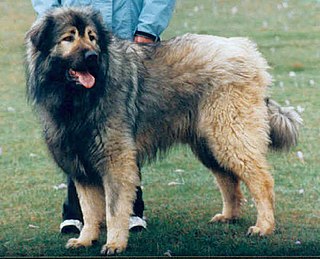
The Šarplaninac or Šarplaninec, or Yugoslavian Shepherd Dog, formerly known as Illyrian Shepherd Dog, is a dog breed of the livestock guardian type named after the Šar Mountains. It is a molosser-type mountain dog.

The Pyrenean Shepherd is a medium-small breed of dog native to the Pyrenees mountains in southern France and northern Spain, bred since at least medieval times for herding livestock, especially sheep. It worked as an active herder together with the Great Pyrenees, another breed, which acted as the flock's guardian.

The Smooth Collie is a breed of dog developed originally for herding. It is a short-coated version of the Rough Collie of Lassie fame. Some breed organisations consider the smooth-coat and rough-coat dogs to be variations of the same breed.

The Puli is a small-medium breed of Hungarian herding and livestock guarding dog known for its long, corded coat. The tight curls of the coat appear similar to dreadlocks. A similar-looking, but much larger breed – also Hungarian – is the Komondor. The term used for a group of Puli is Pulik.

The Groenendael is a variety of dog that is included in the Belgian Shepherd breed, but sometimes treated as a distinct breed. The Groenendael is recognized, either as a breed or a variety of the larger breed, by all major kennel clubs, such as the Kennel Club of the UK. In the American Kennel Club, it is called the Belgian Sheepdog, a term otherwise synonymous with Belgian Shepherd Dog more broadly.

The Catalan sheepdog is a breed of Catalan Pyrenean dog used as a sheepdog. This dog is bred in Europe, especially in Spain, Finland, Germany, and Sweden.

The Kangal Shepherd Dog is a breed of large livestock guardian dog in Sivas, Turkey. Originally the breed served people of Anatolia for thousands of years and continues to be a popular dog breed in Turkey. The Anatolian Shepherd Dog was treated as a separate breed by many canine registries, but this is now generally treated as part of the same breed population and the Turkish Kennel Club has renamed all Anatolian Shepherds as Kangal Shepherds. The breed is of an early Mastiff type with a solid pale tan or sabled coat, and a black mask. According to official Kangal Shepherd Dog organisations in Turkey, including the Cynology Federation of Turkey and the Ankara Kangal Association, Kangals may also be brindle or feature a recessive black tan pattern; with or without a black mask; and/or with white markings.

The Anatolian Shepherd Dog is a breed of dog that originated in Turkey, formerly Anatolia in ancient Greek; meaning (East). The dog is rugged, large, and very strong, with good sight and hearing that allow it to protect livestock. With its high speed and agility, it is able to run down a predator with great efficiency. Historically, it has been treated as a separate breed from the Kangal Shepherd Dog by many canine registries, but is now generally treated as part of the same breed population.
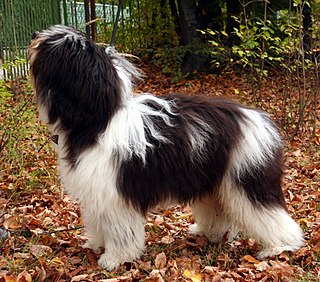
The Polish Lowland Sheepdog, is a medium-sized, shaggy-coated, sheep dog breed native to Poland.

The Czechoslovakian Wolfdog is a relatively new dog breed of wolfdog that traces its original lineage to an experiment conducted in 1955 in Czechoslovakia.
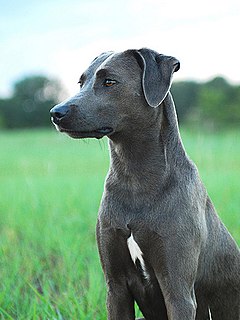
The Lacy Dog or Blue Lacy Dog is a breed of working dog that originated in Texas in the mid-19th century. The Lacy was first recognized in 2001 by the Texas Senate. In Senate Resolution No. 436, the 77th Legislature honored the Lacy as "a true Texas breed". In June 2005, Governor Rick Perry signed the legislation adopting the Blue Lacy as "the official State Dog Breed of Texas". As expected, the vast majority of Lacy dogs are found in Texas. However, as the breed becomes more well recognized, there are breeding populations being established across the United States, Canada, and most recently in Europe.

The KuchiShepherd is an Afghan livestock guardian dog, taking its name from the Kuchi people of Afghanistan. It is a working dog following the nomads, protecting caravans and flocks of sheep, goats, camels and other livestock from wolves, big cats and thieves. It is sometimes known as just a local variant of the Central Asian Shepherd Dog and its status as a distinct breed is disputable.

The Spanish Water Dog breed is used in Spain as a general purpose sheepdog and guard. It is also used sometimes as a gundog, and is skilled at retrieval from water.
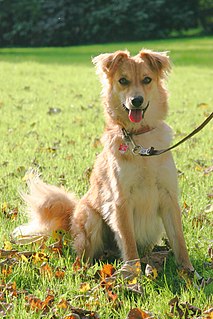
The Basque Shepherd Dog is a landrace breed of dog originating in the Basque Country and traditionally used by the local shepherds to help them take care of their cattle and sheep. Perro de pastor vasco is the Spanish name, and euskal artzain txakurra is the Basque, by which they are known in their homeland. It is believed that they originated from Central European herding dogs.
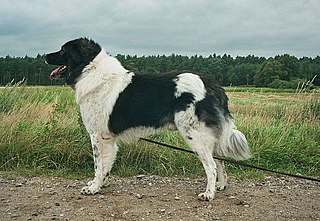
The Karakachan is a breed of dog that originated in Bulgaria as a mountain livestock guardian dog. Other names are Ovcharsko kuche and Thracian Mollos. The dog is named after the Karakachans, Balkan nomadic shepherds. Due to their conservative stock-breeding traditions, they have preserved some of the oldest breeds of domestic animals in Europe: the Karakachan sheep, Karakachan horse and the Karakachan dog.

The Welsh Sheepdog is a landrace of herding dog from Wales. Some people incorrectly call a Welsh Sheepdog a Welsh Collie - usually 'Welsh Collie' is used for a cross between a Welsh Sheepdog and a Border Collie, who is often a milder dog and easier to manage than the pure breed.
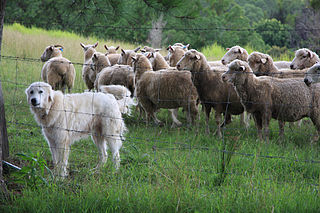
A livestock guardian dog (LGD) is a dog type bred for the purpose of protecting livestock from predators.
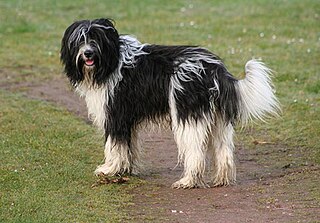
The Schapendoes or Dutch Sheepdog, is a breed of dog originating in the Netherlands. The Schapendoes was originally a herding dog and general farm dog, but today also participates in dog sports such as agility and flyball.
The Cão de Gado Transmontano is a rare molosser working giant dog breed, originating in and largely limited to the region of Trás-os-Montes e Alto Douro Province, Portugal. Their primary function is flock and herd protection, and their success is interlinked to the welfare of the flock and the presence of wolves, particularly. Although they are a regional breed, their wolf defense capacity has led to limited experimental importation elsewhere.


















